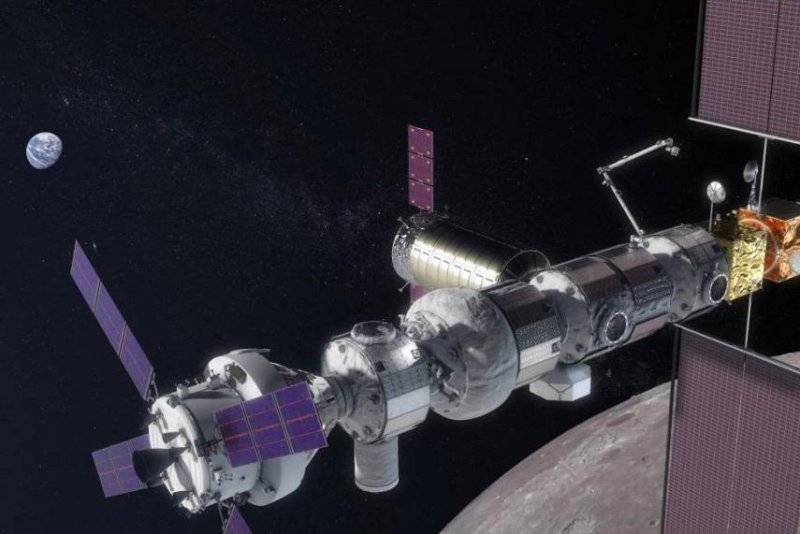NASA Administrator Jim Bridenstine said the agency's planned Gateway project, a lunar-orbiting space station, will support future missions to the moon. Photo courtesy of NASA
March 11 (UPI) -- NASA plans to return astronauts to the moon by 2028 at the latest, Administrator Jim Bridenstine said Monday in releasing the agency's budget. And then: Mars.
"For the first time in over 10 years, we have money in this budget for a return to the moon with humans," Bridenstine said in an hourlong speech. "The president has given us the mission directive to return to the moon, and we're going to do that in short order, maybe even in 2019, but at least by 2020."
Bridenstine emphasized the importance of Lunar Orbital Platform Gateway, a NASA-led international effort to design, build and launch a moon-orbiting space station capable of supporting a variety of lunar missions.
"We're interesting in learning about the entire moon, there is a lot about the moon we don't know," Bridenstine said.
The administrator discussed NASA's interest in exploring the moon's poles, where millions of tons of "very valuable" water ice are locked up.
According to Bridenstine, NASA will be using landers, robots and humans to conduct science across the entirety of the lunar surface by 2028.
Bridenstine described Earth's satellite as a "proving ground."
"Mars is the ultimate goal," he said.
"This budget fully funds Mars 2020," Bridenstine said. "For the first time, we are going to cache samples on Mars. For the first time, we are going to fly a helicopter on another world with the Mars Helicopter. A Mars sample return is also funded in this budget request."
NASA's budget will continue to fund the development of the Space Launch System and Orion spacecraft. The agency expects the world's largest rocket to power manned missions to the moon and Mars in the future.
NASA's focus on moon and Mars missions will leave low-Earth orbit operations largely to the growing private space industry. Bridenstine pointed to the recent Crew Dragon test flight as evidence of the private space industry's increasing capabilities.
"That [test flight] is a first step in a much longer mission for NASA to become one customer among many in a robust space travel marketplace," he said. "We need to continue to drive down costs and increase access."
In addition to deep space exploration, the agency is also working toward a handful of aeronautics goals. Bridenstine highlighted the agency's efforts to develop a quieter supersonic jet, the X59. Sonic booms, created by planes traveling at supersonic speeds, are banned across the U.S. air space, but Bridenstine hopes a plane capable of producing a quieter sonic boom will inspire relaxed regulations.
NASA recently captured imagery of the sonic boom-causing wake produced by supersonic jets, imagery that could help engineers make the X59 sufficiently quiet as it exceeds the speed of sound.
"We're going to take what we learned from these experiments, and we're going to apply them to the X59," Bridenstine said. "We're going to be able to go one side of the United States to the other side of the United States in a couple of hours."
Bridenstine did not explicitly mention climate change, but he acknowledged increasing levels of greenhouse gases.
NASA's largest-ever Earth-monitoring budget, he said, will also enable the agency to keep studying changes in the planet's ecological systems, weather patterns, water cycles and energy cycles.
"We want to reduce climate uncertainty," Bridenstine said.















